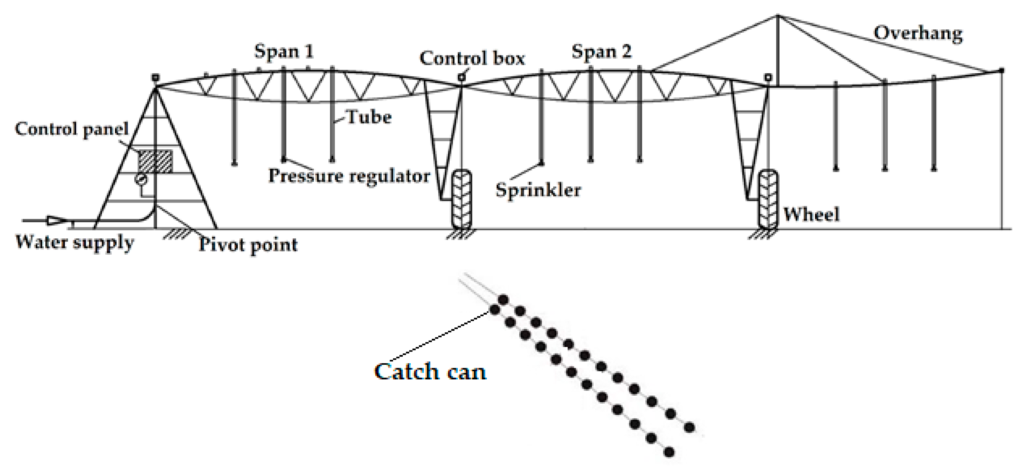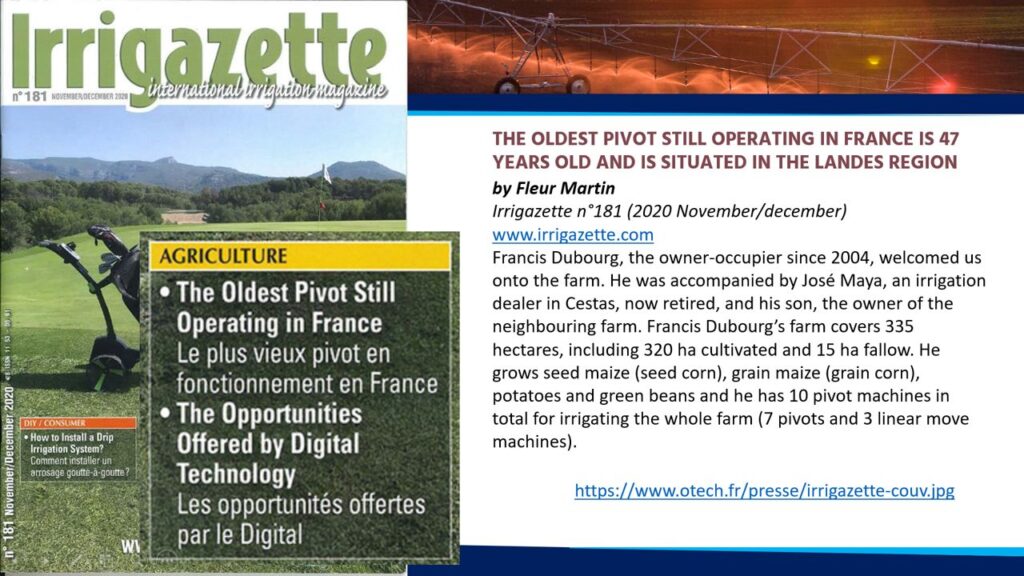Center Pivot & Lateral
Center pivot irrigation is essentially the distribution of water through an elevated pipeline that rotates around a central point (pivot center). The water is pumped to the pivot centre from a source (such as a groundwater aquifer, a man made surface water storage, or a natural river, pond, or lake), fed into the pivot, and applied to the soil by sprinkler devices that are mounted along the length of the pipeline.
In some cases, an additional high-volume sprinkler (end gun) is mounted on the end of the canter pivot system, to water areas of the field that the main pipeline cannot reach. This enables growers to utilize every inch of fertile soil, seeing as most fields are square or rectangular, whereas the center pivot irrigates the ground in a circle. The speed at which the pivot machine is moving determines the amount of water applied to the soil and crop.

Linear irrigation systems provide full coverage of a square or rectangular shaped field. But they not only have a higher purchase price, but are also more complicated to run and manage, and pose more limits in terms of installation compared to their center-pivot counterparts.
For the best of both worlds, many farmers choose to install a corner arm at the end of their center pivot machine. This is essentially an additional span that swings out to water the corners of a square or rectangular field, in order to irrigate those sections that would otherwise be lost due to the circular path of the center pivot.
Dual purpose.
In addition to ensuring reliable crop irrigation, pivot systems can also be used to apply chemicals and fertilizers through the system’s existing sprinklers. Nutritious compounds and agro-chemicals (such as fungicides etc.) can be distributed in a highly efficient manner. This reduces pollution and waste and saves growers from having to purchase additional equipment – creating both an economic and ecological advantage.
Work smarter, not harder. The number of people working in agriculture is rapidly declining, leaving modern farmers to take on more and more tasks themselves. This is one of many reasons why growers are turning to pivot systems as a highly automated and labour-saving form of crop irrigation, which is further aided by increasingly sophisticated technology.
GPS, for example, enables the remote guidance of corner arms and linear machines, as well as the exact positioning of the irrigation system for Variable Rate Irrigation (VRI). Telemetry even goes a step further, by allowing farmers to start, stop and monitor the system via a smartphone or computer – including key parameters such as soil moisture (for irrigation scheduling), tank or pond levels (to prevent overflows or disrupted schedules due to shortages), weather conditions (including wind speed, barometric pressure, and solar radiation), and much more.

